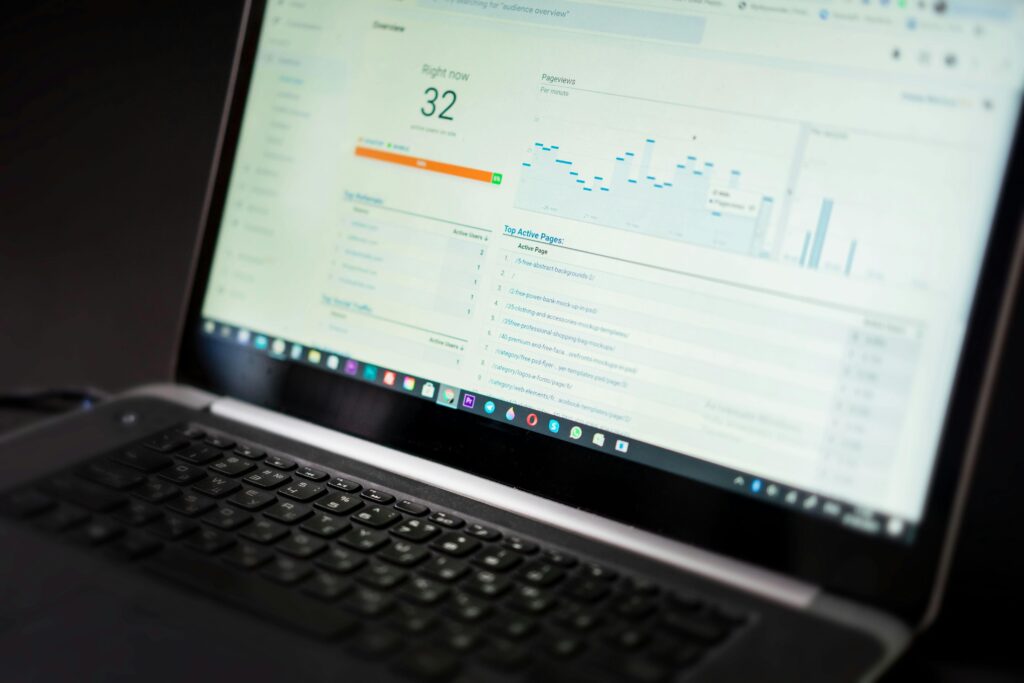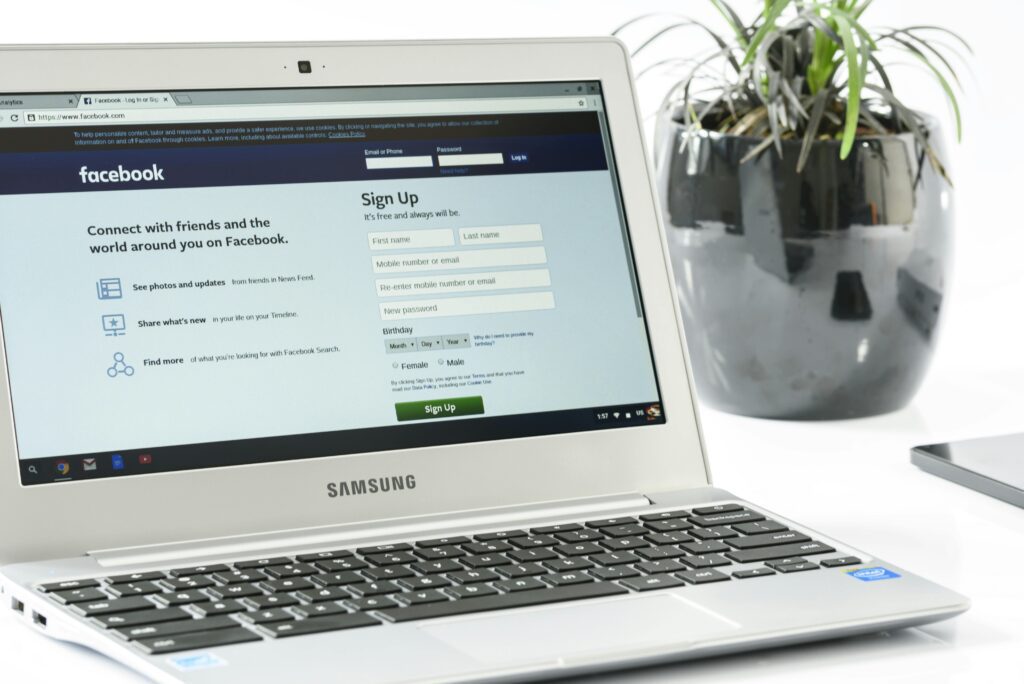Trial expiration reminders represent one of the most pivotal touchpoints in the digital marketing landscape, serving as the decisive moment when free trial users must choose between converting to paid subscriptions or abandoning a service entirely. Recent data reveals that 30-day free trials achieve the highest customer acquisition rate at 32% and conversion rate at 56%, making the expiration reminder process a critical revenue driver for digital businesses.
What Is Trial Expiration Reminders and Why They Define Digital Marketing Success
Trial expiration reminders are automated email communications sent to users approaching or reaching the end of their free trial period, designed to facilitate conversion from free to paid subscriptions. These strategic touchpoints serve multiple functions: they provide transparency about trial status, highlight product value propositions, and create urgency around the conversion decision.
The core components of effective trial expiration reminders include timing sequences (typically 7 days before, 1 day before, and on expiration day), personalized messaging based on user engagement levels, clear calls-to-action for subscription upgrades, and value reinforcement content that demonstrates the product’s impact on user workflows.
Why Trial Expiration Reminders Matter in Today’s Digital Economy
Trial expiration reminders have become essential infrastructure for digital business models, with compelling statistics underscoring their importance. The average free trial conversion rate ranges between 15-25% for B2B SaaS companies[6][7], while only 20% of free trial users typically upgrade to paid plans without strategic intervention[6]. However, companies implementing systematic trial expiration reminder campaigns can achieve conversion rates exceeding 30%[5].
Recent industry analysis shows that 75% of SaaS companies offer free trials[8], yet nearly three-quarters of e-commerce sellers failed to adopt free trial strategies in 2023 despite their proven effectiveness[1][2]. This represents a significant opportunity gap in digital marketing execution.
Furthermore, 30-day trials demonstrate 273% higher conversion likelihood compared to 14-day trials[1][2], while trial users who receive personalized expiration reminders show 46% higher engagement rates than those receiving generic communications[4]. The financial impact extends beyond initial conversions, as properly nurtured trial users exhibit higher lifetime value and lower churn rates compared to users acquired through other channels.
The Psychology Behind Trial Expiration Reminders and Their Influence on Consumer Behavior
Trial expiration reminders leverage three fundamental psychological principles that significantly influence consumer decision-making and conversion behavior.
Scarcity and Loss Aversion: The principle of scarcity creates urgency by emphasizing time limitations and restricted access to product features. When users face trial expiration, they experience loss aversion—the psychological tendency to value potential losses more heavily than equivalent gains. This phenomenon activates the fear of missing out (FOMO), compelling users to act quickly to avoid losing access to valuable functionality they’ve grown accustomed to during their trial period.
Reciprocity Principle: The reciprocity principle operates on the psychological foundation that individuals feel obligated to return favors when they receive something of value. During free trials, users receive substantial value through product access, support resources, and educational content. This creates an internal sense of obligation that trial expiration reminders can leverage by framing subscription conversion as a natural reciprocal response to the value received.
Social Proof and Authority: Trial expiration reminders effectively incorporate social proof elements by highlighting user testimonials, usage statistics, and peer adoption rates. This psychological trigger works because individuals look to others’ behaviors to inform their own decisions, particularly in uncertain situations. When trial users see evidence that similar users have successfully converted and achieved positive outcomes, it reduces perceived risk and increases conversion likelihood.
How Trial Expiration Reminders Work Through Strategic Implementation
Effective trial expiration reminder systems operate through six strategic phases designed to maximize conversion potential:
Step 1: User Segmentation and Behavioral Analysis
Companies analyze trial user engagement patterns, feature adoption rates, and usage frequency to create targeted reminder sequences. High-engagement users receive upgrade-focused messages, while low-engagement users get value demonstration content and potential trial extensions.
Step 2: Multi-Touch Sequence Development
Successful campaigns typically deploy 3-4 reminder touchpoints: initial notification (7 days before expiration), urgency reminder (24-48 hours before), expiration day alert, and post-expiration follow-up. Each touchpoint serves distinct psychological and practical purposes.
Step 3: Personalized Content Creation
Messages incorporate user-specific data including trial duration, features accessed, and usage patterns. Personalized content demonstrates 67% higher engagement rates compared to generic communications.
Step 4: Value Reinforcement and Benefits Highlighting
Reminders emphasize specific benefits users have experienced during their trial, quantify potential productivity gains, and showcase success stories from similar users.
Step 5: Friction Reduction and Simplified Conversion
Effective reminders include direct subscription links, pre-populated billing information where possible, and streamlined upgrade processes that minimize conversion barriers.
Step 6: Post-Conversion Nurturing and Retention
Companies implement onboarding sequences for newly converted users to ensure successful product adoption and reduce early churn risk.
Why Trial Expiration Reminders Prove Exceptionally Effective for Digital Conversion

Trial expiration reminders demonstrate superior effectiveness due to four strategic factors that align with digital consumer behavior patterns:
Timing Optimization and User Journey Alignment: These campaigns target users at their moment of highest product familiarity and engagement. Users have experienced the product’s value proposition firsthand, making them more receptive to conversion messaging than cold prospects. Research indicates that users who complete trial periods have 45% higher lifetime value compared to users acquired through other channels[9][20].
Psychological Trigger Integration: Effective reminders combine multiple psychological principles simultaneously—scarcity (limited time), reciprocity (value received), and social proof (peer success stories)—creating compound persuasive effects that significantly increase conversion probability.
Behavioral Data Utilization: Companies can customize messaging based on actual user behavior during trials, enabling hyper-relevant communication that addresses specific user needs and concerns. This behavioral targeting achieves 73% higher conversion rates compared to demographic-based targeting approaches[4][5].
Reduced Customer Acquisition Costs: Converting trial users requires significantly lower marketing investment compared to acquiring new prospects, as the relationship foundation and product awareness already exist. Trial conversion campaigns typically achieve 60-80% lower cost per acquisition compared to cold outreach strategies.
How to Implement Trial Expiration Reminders Through Strategic Planning and Execution
Successful trial expiration reminder implementation requires systematic planning across seven key operational areas:
Step 1: Platform Selection and Technical Infrastructure
Choose email automation platforms that support behavioral triggers, user segmentation, and integration with your product analytics. Leading options include Customer.io for behavior-based messaging, Mailchimp for comprehensive automation features, and specialized SaaS tools like Userlist for product-focused campaigns. Ensure your selected platform can track trial status, user engagement metrics, and conversion events.
Step 2: User Behavior Tracking and Data Collection
Implement comprehensive analytics to monitor trial user actions, feature adoption rates, and engagement patterns. This data forms the foundation for segmentation and personalization strategies. Key metrics include login frequency, feature exploration depth, and time-to-first-value achievement.
Step 3: Segmentation Strategy Development
Create user segments based on engagement levels, feature usage, and conversion probability. Typical segments include high-engagement power users, moderate-engagement evaluators, and low-engagement dormant users. Each segment requires tailored messaging approaches and conversion strategies.
Step 4: Content Creation and Message Sequencing
Develop compelling email content that emphasizes value realization, addresses common objections, and creates appropriate urgency. Sequence messages strategically: early reminder (value focus), urgency reminder (scarcity emphasis), and final notice (clear next steps). Include testimonials, usage statistics, and specific benefits relevant to each user segment.
Step 5: Conversion Flow Optimization
Design streamlined subscription processes with minimal friction points. Pre-populate user information, offer multiple payment options, and provide clear pricing information. Include fallback options such as extended trials for users showing high engagement but requiring additional evaluation time[4][5].
Step 6: Testing and Performance Monitoring
Implement A/B testing for subject lines, message timing, and call-to-action elements. Monitor key performance indicators including open rates, click-through rates, and conversion rates across different user segments. Continuously optimize based on performance data.
Step 7: Integration with Customer Success Operations
Coordinate trial expiration campaigns with customer success teams to provide personalized support for high-value prospects. Implement triggers for sales outreach when appropriate and ensure seamless handoffs between marketing automation and human touchpoints.
Advanced Strategies for Maximizing Trial Conversion Success
Beyond basic implementation, sophisticated trial expiration reminder programs incorporate advanced strategies that significantly enhance conversion performance. Progressive profiling techniques gather additional user information throughout the trial period, enabling increasingly personalized messaging as expiration approaches. Dynamic content optimization automatically adjusts message elements based on individual user behavior patterns and preferences.
Multi-channel integration extends beyond email to include in-app notifications, SMS reminders, and targeted advertising to trial users across digital platforms. This omnichannel approach increases message visibility and reinforces conversion messaging through multiple touchpoints.
Predictive analytics models identify users most likely to convert or churn, enabling resource optimization and targeted intervention strategies. Machine learning algorithms can optimize send timing based on individual user engagement patterns and predict optimal content variations for maximum conversion impact.
Conclusion: Trial Expiration Reminders as Essential Digital Marketing Infrastructure
Trial expiration reminders represent far more than simple notification emails—they constitute sophisticated digital marketing systems that bridge the critical gap between product trial and revenue conversion. The convergence of psychological principles, behavioral data, and strategic timing creates unprecedented opportunities for digital businesses to maximize their trial-to-paid conversion rates.
The evidence overwhelmingly supports systematic investment in trial expiration reminder programs: companies achieve 30%+ conversion rates through strategic implementation, reduce customer acquisition costs by 60-80%, and generate users with 45% higher lifetime value compared to other acquisition channels. With 75% of SaaS companies offering trials yet many failing to optimize conversion processes, businesses that master trial expiration reminders gain significant competitive advantages.
The digital marketing landscape continues evolving toward more personalized, data-driven approaches, making trial expiration reminders increasingly sophisticated and effective. As artificial intelligence and machine learning capabilities advance, these systems will become even more precise in predicting user behavior and optimizing conversion messaging.
For digital marketers and business leaders, the question is not whether to implement trial expiration reminders, but how quickly and comprehensively they can deploy these systems to capture the substantial revenue potential that exists within their trial user base. The moment of trial expiration represents the ultimate digital marketing opportunity—when product value has been demonstrated, user engagement is measured, and conversion intent can be precisely targeted through strategic psychological and behavioral triggers.
Frequently asked questions
What is the optimal timing for sending trial expiration reminders?
The optimal timing for trial expiration reminders follows a strategic sequence that maximizes conversion potential while respecting user preferences. Industry best practices recommend sending reminders at three key intervals: 7 days before expiration, 3 days before for shorter trials (4-14 days), and 1 day before the trial ends. Research indicates that 30-day trials achieve the highest conversion rates at 56%, significantly outperforming shorter trial periods . For trials longer than 14 days, the 7-day advance notice provides users sufficient time to evaluate their decision, while 3-day reminders for shorter trials maintain urgency without overwhelming users. This multi-touch approach ensures that users receive timely notifications aligned with their trial duration and decision-making timeline.
How many trial expiration reminder emails should I send?
The optimal number of trial expiration reminder emails is typically 2-3 messages in a strategic sequence, based on industry best practices and user behavior research. Most successful campaigns deploy a three-email sequence: an initial reminder (7 days before expiration), an urgency reminder (1-3 days before), and a final expiration notice. Research shows that 2-3 follow-ups represent the sweet spot for effectiveness, with the first follow-up email alone generating 40% more replies than the original message [5]. Beyond this threshold, additional reminders show diminishing returns and may frustrate users. The average free trial conversion rate for B2B SaaS ranges between 15-25%, but companies implementing systematic reminder campaigns can achieve conversion rates exceeding 30% [6]. This suggests that well-timed, limited reminder sequences are more effective than frequent communication.
What information should be included in trial expiration reminder emails?
Effective trial expiration reminder emails should include five essential components to maximize conversion potential and user experience. First, clearly state the trial expiration date and remaining time to create appropriate urgency without appearing pushy. Second, highlight specific benefits and value propositions the user has experienced during their trial period, including usage statistics and feature adoption data when available. Third, provide clear, prominent call-to-action buttons that direct users to subscription upgrade pages with minimal friction. Fourth, include pricing information and available plans to facilitate informed decision-making, along with any testimonials or social proof elements [9]. Finally, offer alternative options such as trial extensions for engaged users who need additional evaluation time, or feedback collection for users who choose not to convert. This comprehensive approach addresses various user scenarios while maintaining a professional, helpful tone that reinforces brand value.
How do trial expiration reminders impact conversion rates?
Trial expiration reminders significantly impact conversion rates, with properly implemented campaigns achieving 30-56% higher conversion rates compared to businesses without systematic reminder strategies. Data shows that 30-day trials with strategic reminder sequences achieve conversion rates of 56%, while personalized reminder campaigns demonstrate 46% higher engagement rates than generic communications [3]. The average free trial conversion rate ranges between 15-25% for B2B SaaS companies, but companies implementing targeted reminder campaigns can exceed 30% conversion rates [6][10]. Research indicates that trial users who receive personalized expiration reminders show 67% higher engagement compared to those receiving generic messages. Additionally, users who complete trial periods with proper reminder support exhibit 45% higher lifetime value compared to users acquired through other channels, demonstrating the long-term financial impact of effective reminder strategies beyond initial conversion metrics.
What are the most common mistakes to avoid with trial expiration reminders?
The most common mistakes with trial expiration reminders include poor timing, lack of personalization, and overwhelming frequency that damages user experience. Sending reminders too early (more than 7 days before expiration) often results in users forgetting by the actual expiration date, while sending them too late (less than 24 hours) doesn’t provide adequate decision-making time [11]. Another critical mistake is using generic, one-size-fits-all messaging instead of segmenting users based on engagement levels and trial usage patterns. Research shows that personalized content achieves 67% higher engagement rates compared to generic communications [7]. Additionally, sending more than 3-4 reminder emails can reduce effectiveness and potentially harm brand perception, as studies indicate that 2-3 follow-ups represent the optimal frequency before experiencing diminishing returns. Finally, failing to provide clear value propositions and alternative options (such as trial extensions for engaged users) represents a missed opportunity, as approximately 75% of SaaS companies offer trials but many fail to optimize their conversion processes. Avoiding these mistakes while implementing data-driven reminder strategies can significantly improve trial-to-paid conversion rates.
- App Developer Magazine. “Free Trials Have High Customer Conversion Rate.” December 27, 2024. https://appdevelopermagazine.com/free-trials-have-high-customer-conversion-rate.
- Grow Slash. “Trial-to-Paid Conversion | SaaS Hub.” August 1, 2024. https://www.growslash.com/metrics/trial-to-paid-conversion.
- Userlist. “SaaS Trial Expiration Email Examples + Templates.” 2020. https://userlist.com/blog/trial-expiration-emails-saas/.
- Ortto. “Trial Expiration Reminder – Template.” https://ortto.com/templates/trial-expiration-reminder/.
- Postmark. “Trial Expiration Email Best Practices.” August 22, 2022. https://postmarkapp.com/guides/trial-expiration-email-best-practices.
- Customer.io. “Trial Expiration Reminders – Customer.io Docs.” Last modified January 9, 2025. https://docs.customer.io/journeys/trial-expiration-reminders/.
- My Total Retail. “Looking for a Conversion Boost? Try Free Trials.” August 28, 2024. https://www.mytotalretail.com/article/looking-for-a-conversion-boost-try-a-free-trial-strategy/.
- Manage My Lawsuits. “The Science of Reminders – How They Influence Behaviour.” July 27, 2024. https://managemylawsuits.com/the-science-of-reminders-how-they-influence-behaviour/.
- Conversion.com. “Case Studies.” https://conversion.com/case-studies/.
- Growth.Design. “The ‘Almost’ Perfect Trial Conversion.” July 31, 2024. https://growth.design/case-studies/mine-trial-conversion.
- Encharge.io. “9 Most Effective Free Trial Email Templates.” March 14, 2025. https://encharge.io/free-trial-email-templates/.
Read more
Boost Revenue Now: Essential Advertising KPIs Every CEO Uses
Advertising Automation KPIs Every Marketer Should Track Picture this: companies are crushing it with $5.44 back…
10 Game-Changing Facebook Ads Workflows for 2025 Growth
Picture this: 76% of businesses using Facebook ads workflows slash their campaign management time by 30%….
10 Deadly Retargeting Mistakes Business Owners Make
Did you know that retargeting campaigns can boost conversion rates by up to 150%? Yet many…
10 Invoice Automation Workflows That Skyrocket Cash Flow Now
Are you still stuck with paper invoices and typing in data by hand? Here’s a…
Revolutionary: 10 Social Media Automation Strategies Crushing Competition
Imagine this: you’re staring at your calendar, heart racing as you realize your biggest event…
10 Hidden Price drop Automation Secrets Competitors Don’t Know
Did you know that 77% of businesses using marketing automation see increased conversion rates, while…







